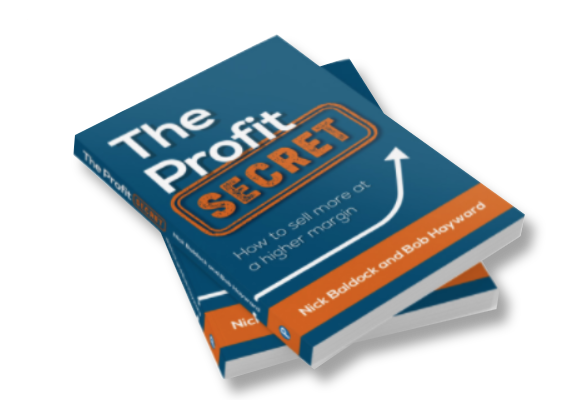The Hidden Cost of Problem-Solving Paralysis

Why Your Organisation Needs Structured Approaches to Complex Challenges
In the corridors of modern business, a silent crisis unfolds daily. Leaders face mounting pressures, teams grapple with unprecedented challenges, and organisations struggle to navigate an increasingly complex landscape. Yet, despite the sophistication of our technology and the depth of our expertise, many businesses remain fundamentally ill-equipped to tackle problems systematically. The absence of structured problem-solving processes, models, and mindsets represents one of the most significant yet overlooked barriers to sustainable success.
The Problem Behind the Problems
When organisations lack systematic approaches to problem-solving, the consequences ripple through every level of operation. Teams default to reactive firefighting rather than proactive analysis. Leaders apply yesterday's solutions to tomorrow's challenges. Resources are squandered on symptoms whilst root causes remain untouched. Most critically, the organisation develops what I term "solution fatigue" – a cynical resignation that problems are simply part of the business landscape rather than puzzles waiting to be solved.
This deficit manifests in several predictable ways. First, organisations repeatedly encounter the same issues, creating expensive cycles of temporary fixes. Second, decision-making becomes inconsistent, varying dramatically based on who happens to be in the room. Third, teams lose confidence in their ability to tackle complex challenges, leading to risk aversion and missed opportunities. Finally, the absence of shared problem-solving language creates communication barriers that compound difficulties rather than resolve them.
The human cost is equally significant. Without structured approaches, individuals experience increased stress, reduced job satisfaction, and diminished sense of professional efficacy. Teams fragment under pressure, reverting to blame cultures rather than collaborative inquiry. Leaders find themselves overwhelmed by the sheer volume of unresolved issues, leading to decision paralysis or, conversely, impulsive choices that create additional problems.
The Landscape of Problem-Solving Methodologies
Understanding the spectrum of available problem-solving approaches is essential for any organisation serious about building systematic capability. These methodologies fall broadly into two categories: those that have achieved widespread adoption and those that remain powerful yet underutilised tools in the problem-solver's arsenal.
The Familiar Territory: Widely Adopted Approaches
The most recognisable problem-solving frameworks have earned their popularity through proven effectiveness across diverse contexts. W. Edwards Deming's Plan-Do-Check-Act (PDCA) cycle has become synonymous with continuous improvement, providing a simple yet robust structure for iterative problem-solving. Originally developed for quality management, PDCA's strength lies in its emphasis on systematic experimentation and learning.
Toyota's contribution to problem-solving methodology cannot be overstated. The "Five Whys" technique, whilst deceptively simple, represents a profound shift from symptom-focused thinking to root cause analysis. By repeatedly asking "why" in response to each answer, practitioners drill down through layers of causation to identify fundamental issues. This approach has transcended its manufacturing origins to become standard practice across industries.
Design Thinking, championed by Stanford's d.school (Hasso Plattner Institute of Design ) and IDEO, has revolutionised how organisations approach human-centred problems. Tim Brown and David Kelley's work emphasises empathy, ideation, and experimentation, creating solutions that genuinely address user needs rather than assumed requirements. The methodology's five stages – empathise, define, ideate, prototype, and test – provide a structured pathway from problem identification to solution implementation.
Six Sigma's DMAIC framework (Define, Measure, Analyse, Improve, Control) represents perhaps the most rigorous approach to problem-solving in corporate environments. Developed by Motorola and popularised by General Electric under Jack Welch, Six Sigma combines statistical analysis with systematic process improvement. Its strength lies in data-driven decision-making and measurable outcomes.
Traditional brainstorming, introduced by Alex Osborn in the 1950s, remains the most universally recognised creative problem-solving technique. Despite criticism regarding its effectiveness in group settings, brainstorming's core principles – deferring judgement, striving for quantity, and building on ideas – continue to influence modern collaborative approaches.
SWOT Analysis (Strengths, Weaknesses, Opportunities, Threats) provides a strategic framework for situational assessment. Whilst often criticised for oversimplification, SWOT's enduring popularity reflects its utility as a starting point for strategic problem-solving and decision-making.
The Hidden Arsenal: Underutilised Methodologies
Beyond these familiar approaches lies a rich collection of sophisticated methodologies that remain largely unknown outside specialist circles. These tools often provide superior solutions for specific types of problems, yet their adoption remains limited due to complexity, lack of awareness, or insufficient training resources.
The Theory of Inventive Problem Solving (TRIZ), developed by Genrich Altshuller through analysis of millions of patents, offers a systematic approach to innovation. TRIZ identifies forty inventive principles and provides structured methods for overcoming technical contradictions. Whilst primarily applied in engineering contexts, its principles have broader applicability to business innovation challenges.
Morphological Analysis, created by Fritz Zwicky, provides a method for exploring all possible solutions to a multi-dimensional problem. By breaking complex problems into independent parameters and systematically combining different values, practitioners can identify novel solutions that might otherwise remain hidden.
Synectics, developed by William Gordon, uses analogical thinking and metaphorical reasoning to generate creative solutions. The methodology's strength lies in its ability to make the familiar strange and the strange familiar, opening new perspectives on entrenched problems.
Three Preferred Methodologies for Modern Leaders
From this extensive toolkit, three methodologies stand out as particularly valuable for contemporary organisational challenges: the Kepner-Tregoe Rational Decision-Making process, Appreciative Inquiry, and the Cynefin Framework.
Kepner-Tregoe Rational Decision Making
Charles Kepner and Benjamin Tregoe's rational approach to problem-solving and decision-making represents one of the most systematic methodologies available to business leaders. Developed in the 1960s, the Kepner-Tregoe method distinguishes between four types of thinking: situation appraisal, problem analysis, decision analysis, and potential problem analysis.
The methodology's power lies in its rigorous separation of facts from assumptions, its systematic approach to root cause identification, and its structured evaluation of alternatives. Unlike intuitive approaches that rely heavily on experience and gut feeling, Kepner-Tregoe provides a logical framework that can be taught, learned, and consistently applied across different contexts and personnel.
Situation appraisal helps leaders clarify what they're actually dealing with, separating urgent from important issues and identifying the appropriate thinking process for each concern. Problem analysis focuses on finding the root cause of deviations from expected performance. Decision analysis provides a structured approach for choosing between alternatives, whilst potential problem analysis anticipates and prevents future difficulties.
The methodology's emphasis on precise problem definition resonates with the wisdom that "a problem well-defined is half-solved." By requiring practitioners to specify exactly what is wrong, where it occurs, when it happens, and to what extent, Kepner-Tregoe forces the kind of disciplined thinking that often reveals solutions hidden by vague problem statements.
Appreciative Inquiry
David Cooperrider's Appreciative Inquiry represents a fundamental shift from deficit-based to strength-based problem-solving. Rather than focusing on what's wrong and needs fixing, Appreciative Inquiry explores what's working well and how those positive elements can be amplified and extended.
The methodology's four-D cycle – Discover, Dream, Design, and Destiny – provides a structured approach to organisational change that builds on existing strengths rather than attempting to eliminate weaknesses. This approach proves particularly powerful in addressing cultural and morale issues where traditional problem-solving methods often create resistance and defensiveness.
Appreciative Inquiry's strength lies in its recognition that organisations move in the direction of their inquiries. By focusing attention on positive examples and successful practices, the methodology creates energy and momentum for change. This approach proves especially valuable when dealing with complex human systems where traditional analytical approaches may miss crucial relational and cultural dynamics.
The methodology's emphasis on storytelling and shared meaning-making aligns with how humans naturally process information and create understanding. Rather than reducing complex situations to analytical frameworks, Appreciative Inquiry honours the narrative nature of organisational life whilst still providing structure for systematic improvement.
The Cynefin Framework
Dave Snowden's Cynefin Framework addresses one of the most fundamental challenges in problem-solving: recognising what type of problem you're actually facing. The framework distinguishes between five domains – simple, complicated, complex, chaotic, and disorder – each requiring different approaches and leadership responses.
Simple problems exist in the realm of best practices where the relationship between cause and effect is clear and predictable. Here, the appropriate response is to sense the situation, categorise it according to established patterns, and respond with proven solutions. Complicated problems require good practices and expert analysis. The cause-and-effect relationship exists but requires investigation and expertise to understand.
Complex problems operate in the realm of emergent practices where cause and effect can only be understood in retrospect. These situations require experimentation, learning, and adaptation rather than analysis and planning. Chaotic situations demand immediate action to establish stability before any analysis can occur.
The framework's power lies in preventing the common mistake of applying the wrong approach to the wrong type of problem. Many organisational failures result from treating complex adaptive challenges as if they were complicated technical problems, leading to over-analysis and under-action. Conversely, applying complex-domain approaches to simple problems creates unnecessary confusion and delay.
Cynefin proves particularly valuable for leaders navigating the modern business environment where technological disruption, cultural change, and market volatility create predominantly complex and chaotic conditions. The framework provides a shared language for discussing different types of challenges and selecting appropriate responses.
Building Problem-Solving Capability
Implementing systematic problem-solving approaches requires more than simply learning techniques. Organisations must develop what might be termed "problem-solving culture" – shared beliefs, practices, and capabilities that support systematic inquiry and continuous improvement.
This cultural transformation begins with leadership commitment to structured approaches over intuitive decision-making. Leaders must model systematic thinking, ask better questions, and resist the temptation to jump immediately to solutions. The quality of questions determines the quality of thinking, and organisations that develop strong questioning capabilities invariably develop stronger problem-solving capabilities.
Training and development programmes must go beyond technique instruction to address underlying mindsets and assumptions. Many individuals resist systematic approaches because they perceive them as bureaucratic or time-consuming. Effective implementation requires demonstrating how structured approaches actually save time by preventing rework and reducing false starts.
Creating shared language around problem-solving methodologies enables more effective collaboration and communication. When team members understand different types of problems and appropriate responses, they can engage more productively in collective problem-solving efforts.
The Path Forward
The organisations that thrive in an increasingly complex and uncertain environment will be those that develop superior problem-solving capabilities. This requires moving beyond ad hoc approaches to systematic methodologies that can be taught, learned, and consistently applied.
The investment in problem-solving capability pays dividends across multiple dimensions: improved decision quality, reduced implementation time, increased innovation, enhanced team effectiveness, and greater organisational resilience. Most importantly, systematic approaches to problem-solving create learning organisations that become stronger through each challenge they encounter.
Ready to transform your organisation's problem-solving capability? Our comprehensive Problem-Solving Guide provides detailed frameworks, practical tools, and implementation strategies for building systematic approaches to complex challenges. From diagnostic techniques to decision-making processes, this resource equips leaders and teams with the methodologies needed to tackle any problem with confidence and precision.
Request your copy of our complete Problem-Solving Guide today and discover how structured approaches can revolutionise your organisation's ability to navigate complexity and drive sustainable success. Contact Be More Effective to begin your journey toward systematic problem-solving excellence.
For more information please send a message via the Contact Us Page. Or you can register for an upcoming webinar.


